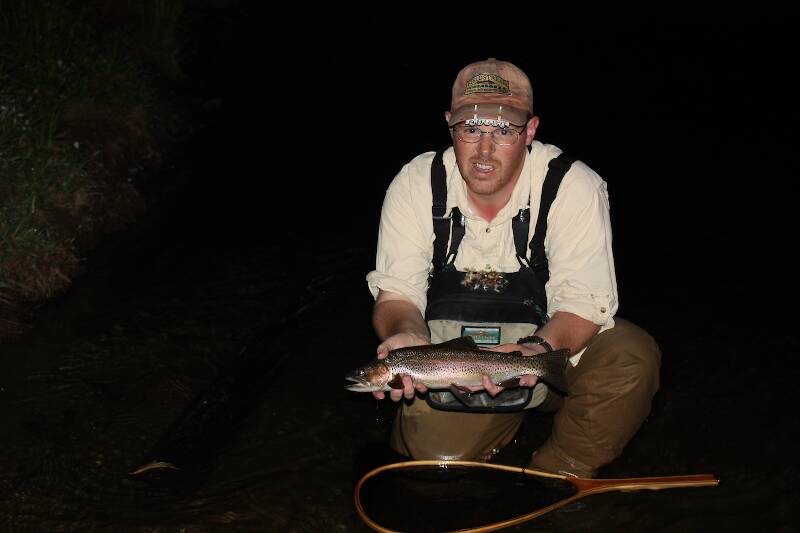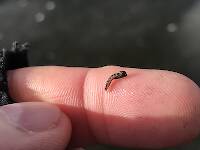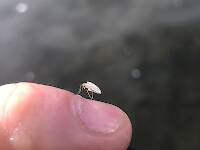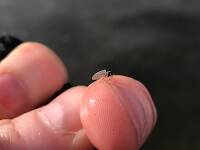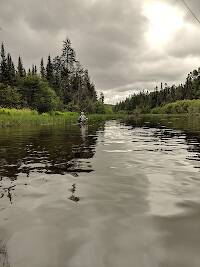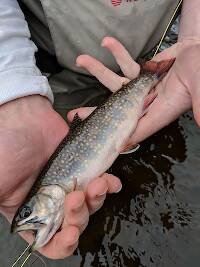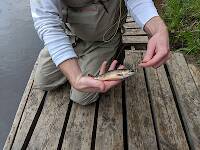
Salmonflies
Pteronarcys californica
The giant Salmonflies of the Western mountains are legendary for their proclivity to elicit consistent dry-fly action and ferocious strikes.
Featured on the forum

This specimen keys to the Epeorus albertae group of species. Of the five species in that group, the two known in Washington state are Epeorus albertae and Epeorus dulciana. Of the two, albertae has been collected in vastly more locations in Washington than dulciana, suggesting it is far more common. On that basis alone I'm tentatively putting this nymph in albertae, with the large caveat that there's no real information to rule out dulciana.

Troutnut is a project started in 2003 by salmonid ecologist Jason "Troutnut" Neuswanger to help anglers and
fly tyers unabashedly embrace the entomological side of the sport. Learn more about Troutnut or
support the project for an enhanced experience here.
BrettHRomer has attached these 6 pictures to aid in identification. The message is below.
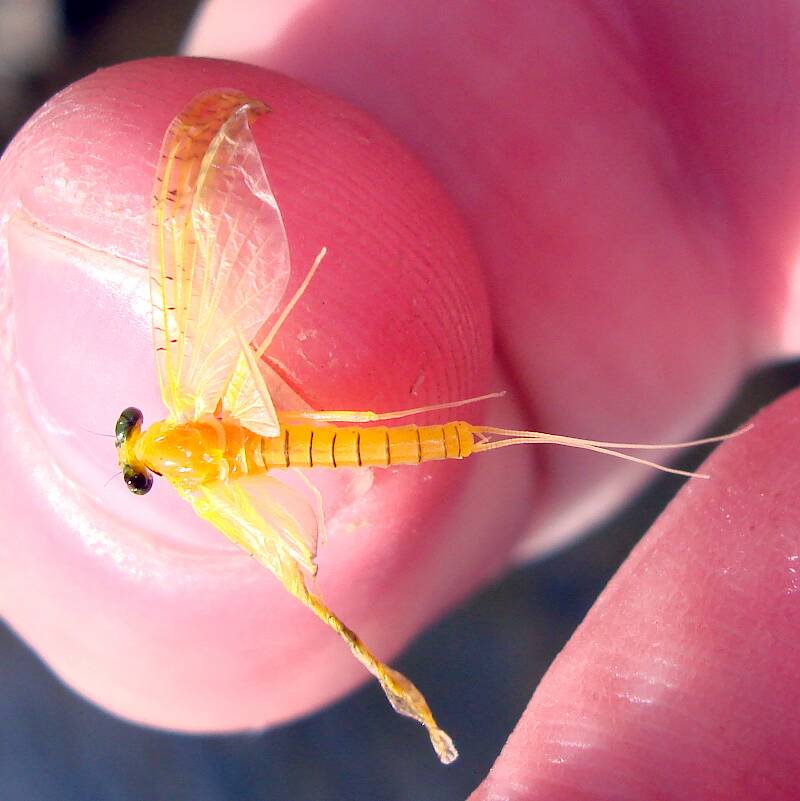

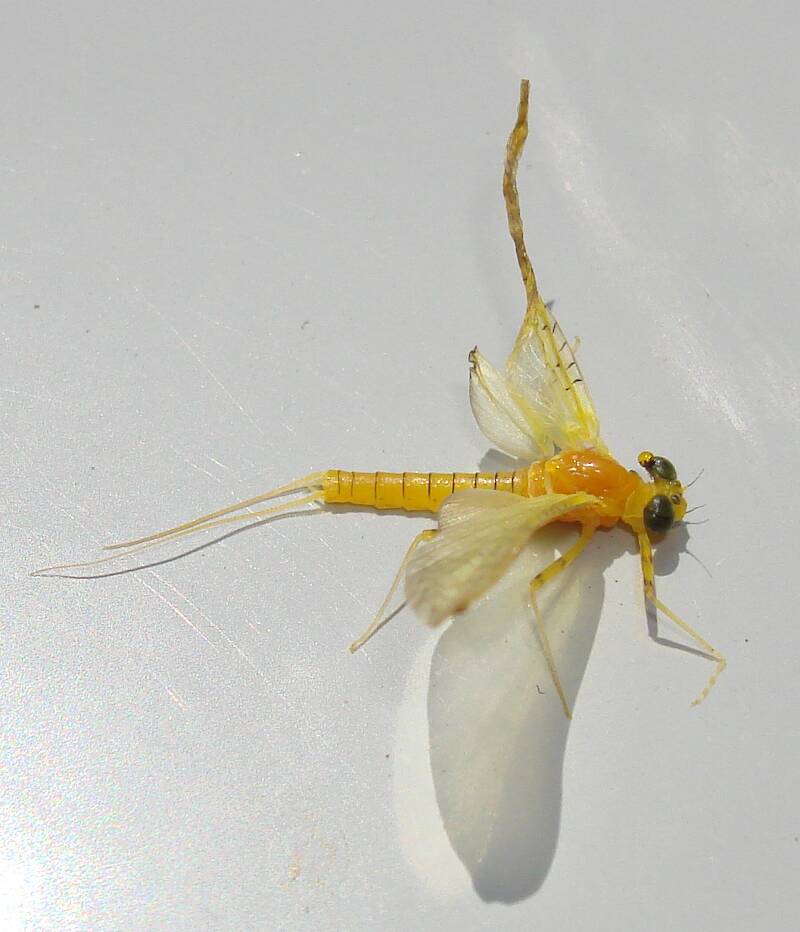
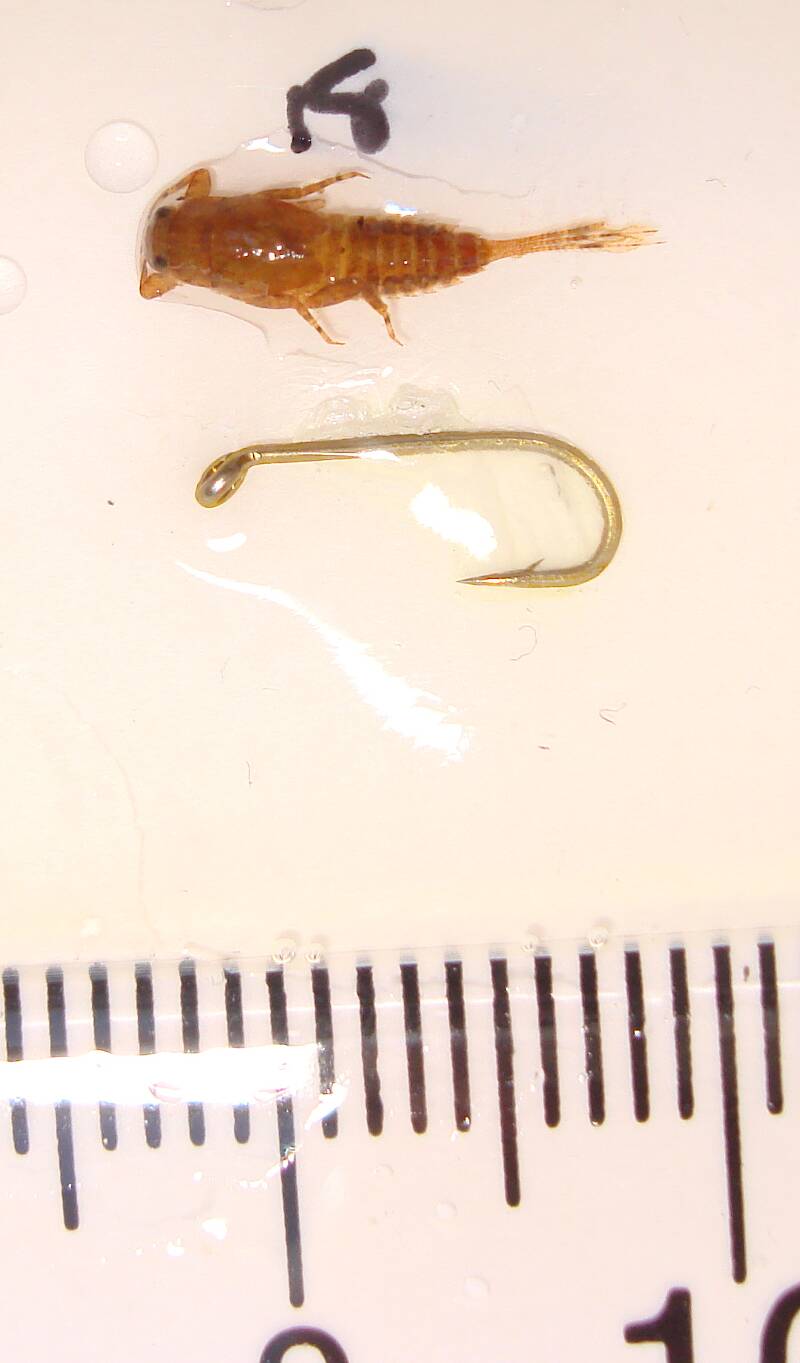
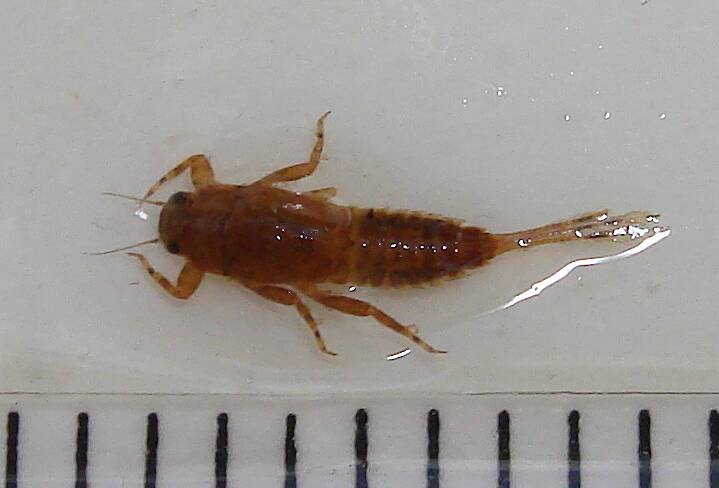
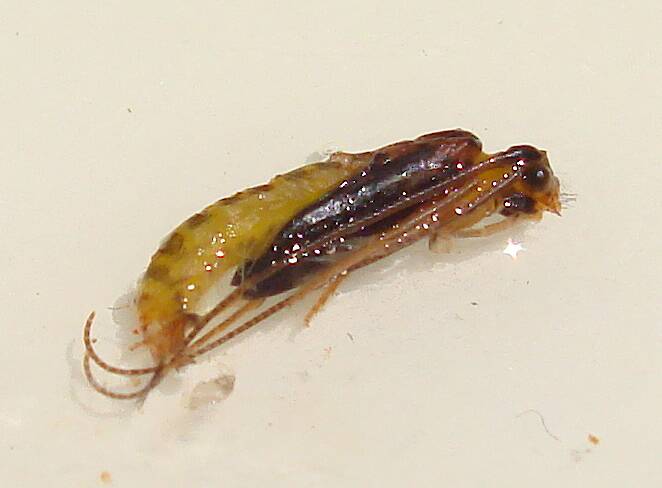
BrettHRomer
Posts: 2
Posts: 2
BrettHRomer on May 7, 2008May 7th, 2008, 2:12 am EDT
Hey guys...wanted to say we've had an excellent couple of weeks fishing here in good ol East Tennessee! I've been picking apart the Watauga River for the past 6 months trying to figure out the on slaught of hatches that river seems to have! I really wanted to fish the caddis hatch this year but seemed to miss out.
The other day while on the water we watched sporadic hatches of what appeared to be sulphurs coming off. Sizes ranging from about a 14 to a size 16 absolutely no smaller! I managed to snap a picture of one of these guys, but only after mashing his/her wing! I spent around 4 hours looking through Jason's site only coming up with the little yellow quill. I'm really confused guys. It has huge black eyes....ah forget it here's the pictures! This one would fit nicely on a size 14 TMC 100!
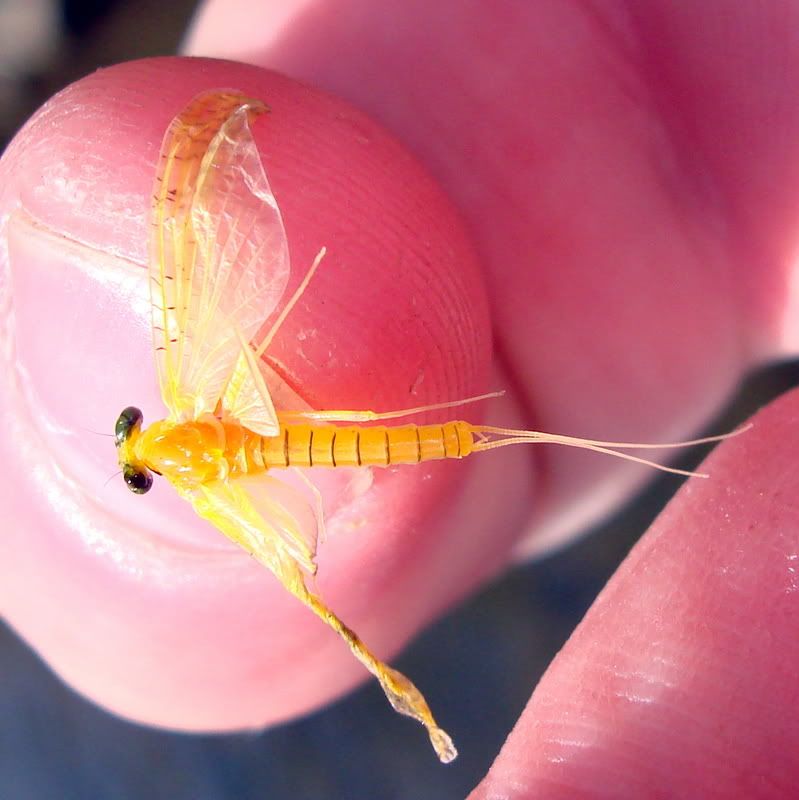
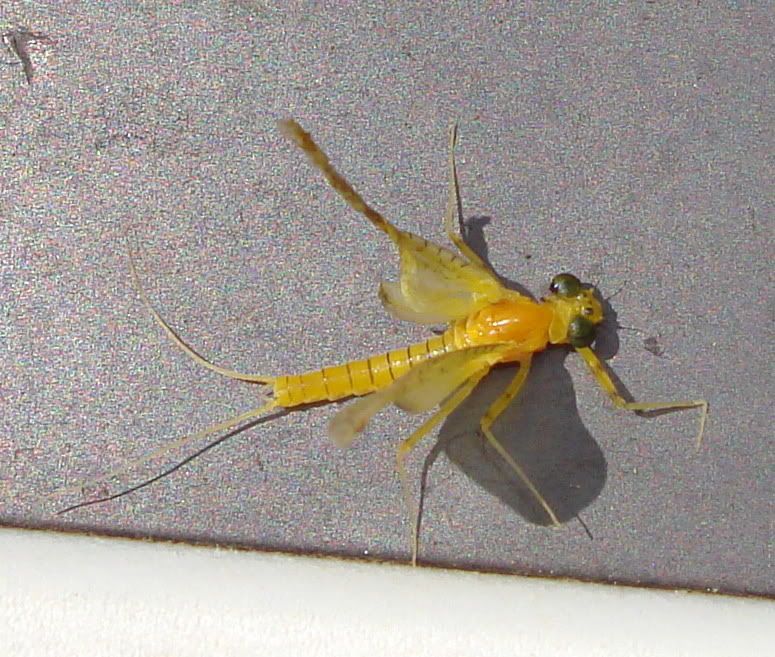

That veiny wing and the heavily segmented body is what's telling me it's not a sulphur!
I also managed to snap a few other pictures of some other specimans for you and a pic of a hydro for you all to marval at!
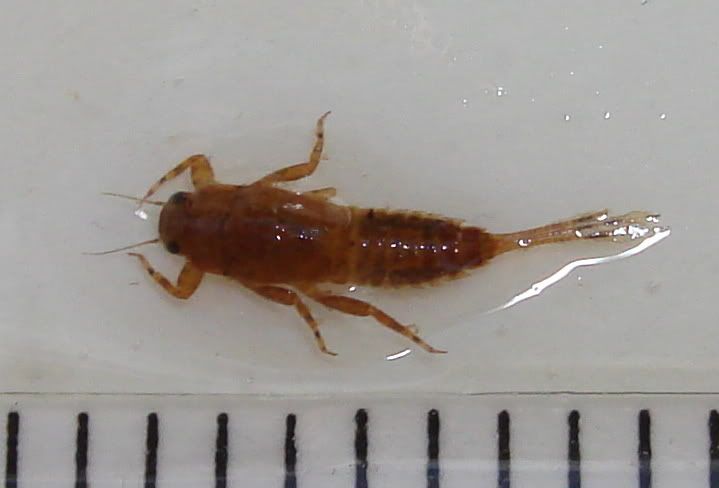

Here's that caddis!
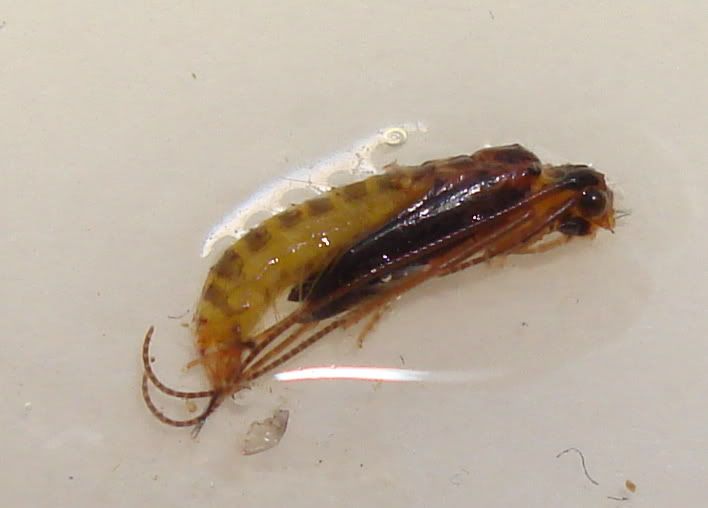
The other day while on the water we watched sporadic hatches of what appeared to be sulphurs coming off. Sizes ranging from about a 14 to a size 16 absolutely no smaller! I managed to snap a picture of one of these guys, but only after mashing his/her wing! I spent around 4 hours looking through Jason's site only coming up with the little yellow quill. I'm really confused guys. It has huge black eyes....ah forget it here's the pictures! This one would fit nicely on a size 14 TMC 100!



That veiny wing and the heavily segmented body is what's telling me it's not a sulphur!
I also managed to snap a few other pictures of some other specimans for you and a pic of a hydro for you all to marval at!


Here's that caddis!

GONZO on May 7, 2008May 7th, 2008, 4:41 am EDT
Brett,
The yellow mayfly dun is a male heptageniid, the nymph is an Ephemerella nymph (probably one of the "sulphurs"), and the caddisfly pupa appears to be a hydropsychid.
PS--Welcome to the site!
The yellow mayfly dun is a male heptageniid, the nymph is an Ephemerella nymph (probably one of the "sulphurs"), and the caddisfly pupa appears to be a hydropsychid.
PS--Welcome to the site!
JOHNW on May 7, 2008May 7th, 2008, 11:24 am EDT
Brett,
Welcome!
It's good to hear the Watauga is doing so well insect wise. I'm curious as to what general area of the river your samples are from?
I was under the impression that the lower section (below the Old National Rayon in Elizabethton) was pretty limited for mayflies. I certainly hope that that old info is now incorrect and the insect life is fully rebounding from the fire.
John
Welcome!
It's good to hear the Watauga is doing so well insect wise. I'm curious as to what general area of the river your samples are from?
I was under the impression that the lower section (below the Old National Rayon in Elizabethton) was pretty limited for mayflies. I certainly hope that that old info is now incorrect and the insect life is fully rebounding from the fire.
John
"old habits are hard to kill once you have gray in your beard" -Old Red Barn
Taxon on May 7, 2008May 7th, 2008, 11:48 am EDT
Brett-
To supplement to Gonzo's family identification of your yellow mayfly dun, I believe it be Stenacron heterotarsale, now classified as Stenacron interpunctatum.
To supplement to Gonzo's family identification of your yellow mayfly dun, I believe it be Stenacron heterotarsale, now classified as Stenacron interpunctatum.
Creno on May 7, 2008May 7th, 2008, 12:48 pm EDT
Brett - if you still have the caddis specimen it can probably be identified to species since the black wingpads are quite developed. I would expect to be able to see obvious gill tufts if this is a hydropsychid. It looks to me like there are broad, flattened palps just under the head. (they could be the forelegs but they don't look right) If so this would probably be a brachycentrid. That would also explain what appear to be fairly thick antennae. Hydropsychids (except the Arctopsychinae) have fairly fine antennae, particularly at the tips.
dave
dave
BrettHRomer
Posts: 2
Posts: 2
BrettHRomer on May 7, 2008May 7th, 2008, 2:36 pm EDT
Man! You all are awesome....I'd like to take all u guys fishing and pick ur brains! I'd love to be able to learn all this stuff, makes for a better tier! As far as the Watauga, it's pretty good...I wouldn't say a full rebound as of yet, but the fish are always willing to take what you give them in the lower section...Below persinger bridge all the way out! The river is absolutely chalked full of caddis!!!! Both cased and free living...I have one pattern that is absolutely killer for cased caddis on that river, a buddy and I dreamed it up after a couple of different patterns that wouldn't make the cut.
As for the caddis I no longer have that speciman! I need to get some bug balm! Anyone know any supplements?
Thanks again guys!
~Brett
As for the caddis I no longer have that speciman! I need to get some bug balm! Anyone know any supplements?
Thanks again guys!
~Brett
JOHNW on May 8, 2008May 8th, 2008, 10:26 am EDT
"....I'd like to take all u guys fishing and pick ur brains!"
Brett,
Careful what you wish for with this crew.
As an aside have you started seeing any drakes on the mountain streams down that way? I'm thinking the hatch should be just about ready to pop.
JW
Brett,
Careful what you wish for with this crew.
As an aside have you started seeing any drakes on the mountain streams down that way? I'm thinking the hatch should be just about ready to pop.
JW
"old habits are hard to kill once you have gray in your beard" -Old Red Barn
Quick Reply
Related Discussions
Topic
Replies
Last Reply
1
Aug 21, 2007
by Gene
by Gene
0
Jun 29, 2020
by Wiflyfisher
by Wiflyfisher
0
May 6, 2011
by Jtberez
by Jtberez


